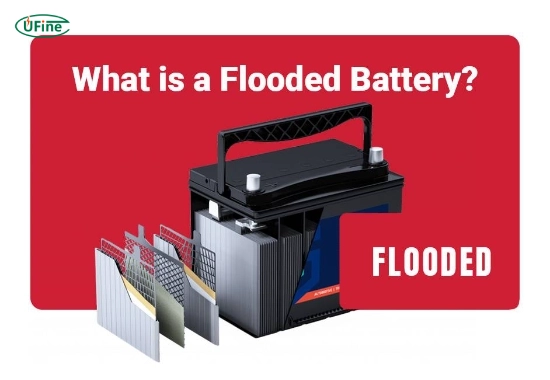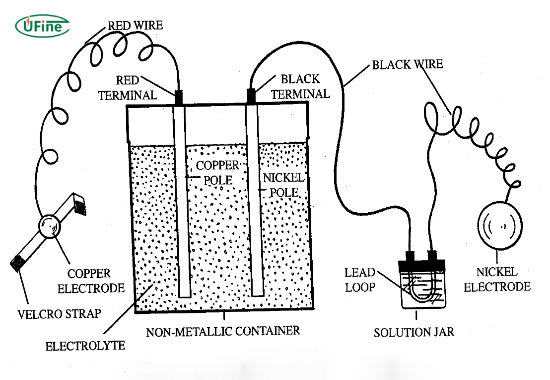Flooded batteries are crucial in various applications, from powering vehicles to providing home backup energy. Understanding their mechanics, maintenance, and advantages can help users make informed decisions. This comprehensive guide will delve into everything you need to know about flooded batteries, ensuring you have the knowledge to optimize their use and longevity.
Part 1. What is a flooded battery?
A flooded battery, often called a wet cell battery, is a lead-acid battery where the electrolyte solution, typically sulfuric acid mixed with water, completely immerses the lead plates. This design allows for efficient chemical reactions that generate electrical energy. Many people widely use flooded batteries due to their reliability and cost-effectiveness.
Key Characteristics of Flooded Batteries
- Electrolyte Composition: The electrolyte in flooded batteries is liquid, which can evaporate over time.
- Maintenance Requirements: These batteries require regular maintenance, including checking electrolyte levels and adding distilled water when necessary.
- Ventilation Needs: Flooded batteries emit gases during charging, necessitating proper ventilation to prevent pressure buildup.
Part 2. How do flooded batteries work?
Flooded batteries operate on the principle of electrochemical reactions between lead dioxide (PbO2), sponge lead (Pb), and sulfuric acid (H2SO4). When the battery discharges, the following reactions occur:
- Discharge Reaction: Lead dioxide reacts with sponge lead and sulfuric acid to produce lead sulfate (PbSO4) and water (H2O).
- Charge Reaction: When charging, the reverse reaction occurs, converting lead sulfate back into lead dioxide and sponge lead while regenerating sulfuric acid.
This cycle continues as long as you use the battery within its specifications.
Part 3. Advantages and disadvantages of flooded batteries
Flooded batteries offer several benefits that make them a popular choice for various applications, but they also come with some drawbacks.
Advantages
- Cost-Effective: They are generally cheaper than other types of batteries, such as sealed or gel batteries.
- High Cycle Life: Flooded batteries can endure numerous charge-discharge cycles, making them suitable for deep-cycle applications.
- Easier to Recycle: Lead-acid batteries are among the most recycled products globally, contributing to environmental sustainability.
- Robust Performance: They perform well under high load conditions, making them ideal for applications requiring significant power output.
Disadvantages
- Maintenance Requirements: Flooded batteries require regular maintenance, including checking and topping off electrolyte levels with distilled water. This can be time-consuming and inconvenient for some users.
- Gas Emission: During charging, flooded batteries emit hydrogen gas, which can be hazardous if not properly ventilated. This necessitates careful installation in well-ventilated areas.
- Weight: Due to the liquid electrolyte and lead components, they tend to be heavier than other battery types, which may limit their application in lightweight setups.
- Temperature Sensitivity: Flooded batteries can be affected by extreme temperatures. High heat can accelerate the evaporation of the electrolyte, while cold temperatures can reduce performance and capacity.
Part 4. Common applications of flooded batteries
Many applications use flooded batteries due to their versatility:
- Automotive Use: Cars commonly use them to start engines and power electrical systems.
- Renewable Energy Systems: Flooded batteries often comprise solar energy storage systems, providing backup power when sunlight is insufficient.
- Marine Applications: Boaters frequently use flooded batteries to power onboard electronics and start engines.
- Forklifts and Industrial Equipment: Many industrial settings rely on flooded batteries for forklifts and other heavy machinery due to their durability and high cycle life.
Part 5. Maintenance tips for flooded batteries
Proper maintenance is essential for maximizing the lifespan and performance of flooded batteries:
- Regular Inspections: Check the terminals for corrosion and clean them as needed. Corrosion can impede electrical connections and reduce efficiency.
- Monitor Electrolyte Levels: Regularly check the electrolyte levels; ideally, you should do this every month or more often if you heavily use the battery. Top off with distilled water if necessary to maintain optimal levels.
- Ensure Ventilation: Your battery installation area should be well-ventilated to prevent gas buildup. Installing vent caps can help manage gas emissions effectively.
- Charge Properly: Use a charger designed for flooded batteries to ensure proper charging rates and avoid overcharging or undercharging situations.
Part 6. How long do flooded batteries last?
The lifespan of a flooded battery can vary significantly based on several factors:
- Usage Patterns: Frequent deep discharges can significantly reduce lifespan. It’s best to avoid regularly discharging below 50% of capacity.
- Maintenance Practices: Proper maintenance can extend the life of a flooded battery by several years. Neglecting maintenance can shorten its lifespan considerably.
On average, a well-maintained flooded battery lasts 3 to 5 years. Some users report even longer lifespans with diligent care.
Part 7. What affects the performance of flooded batteries?
Several factors can influence how well a flooded battery performs:
- Temperature: Extreme temperatures can affect both charging efficiency and overall battery health. Ideally, maintain a moderate temperature range during operation.
- Charging Practices: Overcharging or undercharging can damage the plates and reduce capacity. Always use appropriate chargers designed for your specific battery type.
- Quality of Components: The quality of materials used in manufacturing also plays a crucial role in performance. Investing in reputable brands often yields better results over time.
Part 8. How to choose the right flooded battery?
Selecting the right flooded battery involves considering various factors:
- Capacity Needs: Determine how much energy you need based on your application (e.g., vehicle size or solar system requirements). Look at amp-hour ratings to gauge capacity effectively.
- Physical Size: Ensure the battery fits within your designated space while allowing proper ventilation. Measure dimensions carefully before purchase.
- Brand Reputation: Opt for reputable brands known for the quality and reliability of their products. Reading customer reviews can provide insight into performance over time.
Part 9. FAQs
-
What is the difference between flooded and sealed batteries?
Flooded batteries have liquid electrolytes that require maintenance, while sealed (or maintenance-free) batteries contain gel or absorbed glass mat electrolytes that do not require regular checks or refills. -
Can I use tap water in my flooded battery?
No, it’s essential to use distilled water only when topping off your flooded battery’s electrolyte levels. Tap water may contain minerals that can harm the battery’s performance. -
How could my flooded battery be better?
Signs of a failing flooded battery include swelling, leaking electrolytes, reduced capacity (shorter runtime), or difficulty starting an engine. Regular testing with a multimeter can also help assess health; voltages below 12.4 volts indicate potential issues. -
Are flooded batteries safe?
When maintained correctly, flooded batteries are safe. However, improper handling can lead to leaks or gas buildup, so always follow safety guidelines during use and maintenance. -
How should I dispose of old flooded batteries?
Dispose of old flooded batteries at designated recycling centers or hazardous waste facilities. Many retailers also offer recycling programs for used lead-acid batteries to ensure environmentally responsible disposal practices.
Related Tags:
More Articles

LiPo Battery Discharge Rate Guide & Calculation Tips
Understand LiPo battery discharge rates, C-ratings, and how to calculate max current. Essential guide for RC, drones, and electronics users.
High‑Capacity 3S LiPo Batteries: 5000 mAh vs. 10000 mAh
Compare 3S LiPo 5000mAh vs 10000mAh batteries by weight, power, and use. Find the best fit for your drone, RC car, or boat setup.
Top 5 Applications for Small 3S LiPo Batteries
Small 3S LiPo batteries power drones, RC gear, wearables, and robotics with high energy and low weight. Making them ideal for compact electronics projects.
Building and Charging Your Own 3S LiPo Pack: A Step‑by‑Step Guide
Learn how to build, balance, and charge a 3S LiPo battery pack safely at home with this complete DIY guide for hobbyists and beginners.
How to Choose the Right LiPo Battery Plug Type?
Discover the best LiPo battery plug types, how to choose them, and expert tips for safe usage, soldering, and maintenance.






